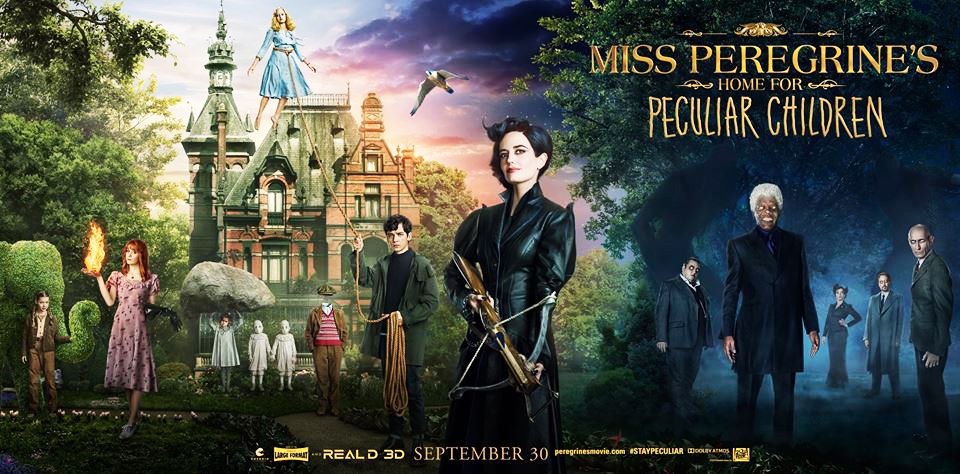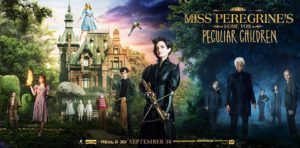

The original novel of the same name was originally conceived purely as a picture book, before advice from his editor convinced Ransom Riggs to create a narrative to go along with it, according to an interview with the Saratosa Herald-Tribune. The book has two sequels.
By Salena Moran and Evan Perod | Staff Writers
Director Tim Burton, master of dark, creepy and whimsical cinema, failed to incorporate his usual charisma into his latest film, “Miss Peregrine’s Home for Peculiar Children” — based on the young-adult novel by Ransom Riggs.
The original book is just one of a trilogy filled with vintage photographs, imaginative plot lines and peculiar characters. Burton, however, used his “creative liberties” to alter the story’s plotline and left viewers with just an average ending.
In the film, Jake Portman (Asa Butterfield) enjoyed time spent with his grandfather, Abe (Terence Stamp), who told him stories of his mysterious past involving a children’s home in the height of World War II.
Events took a turn for the worst when Jake discovers a malicious creature outside his grandfather’s home, prompting him to prove whether his grandfather’s tales were real or fiction.
In his journey to discover the truth, Jake takes a grim and foggy boat ride to an island off the coast of Wales where this home is believed to be located. Upon his first visit to the home, Jake finds nothing but a house in utter shambles.
Through a series of twists, turns and time loops, Jake eventually encounters Miss Peregrine (Eva Green) and her home filled with peculiar children — but in the year 1943. Jake is not alone in his visits to the home, as the evil villain and his sinister group of creatures follow him and try to destroy the children to obtain immortality. Jake must now discover his own abilities and try to protect the children.
This movie suffers from what a lot of screen adaptations suffer from: too much exposition in too little time. While the book developed relationships between characters over several chapters, the film quickly scrunches crucial details into a short two minutes. Viewers unfamiliar with the book can be easily confused from the lack of character development.
In another cringe-worthy moment of the film, Burton completely changes the storyline and adds a modern twist to his movie by inviting the children into 2016. The movie leaves its eerie moaning choir and string ensemble for rave music and abandons its suspenseful scenes for carnival games, snow cones and mannequin-esque creatures. It feels like a completely different movie, as it fails to stay true to its nostalgic 1940s vibe.
In terms of the actors and their characters, Asa Butterfield is rather bland and static throughout the entirety of the movie. One would think that encountering frightening creatures and a home filled with odd children would develop or expand his character’s personality, but this was not the case. Perhaps the motivation behind his performance was to make his character so bland that everyone else seems more peculiar and interesting without having to do anything.
Samuel L. Jackson, who plays the main villain of the film, was originally written as a very scary and powerful character in the novel. Unfortunately, his role is reduced to comedy fueled with jokes and funny expressions. While Jackson livens up the role, it is disappointing that he did not take on the serious tone of the original character.
Despite the drawbacks of her fellow actors, the only real star is perhaps Miss Peregrine herself, played by Eva Green. With her unique blue/ black hair and asymmetrical costume, Green embodied the role. She also accurately portrayed the authoritative but sweet aspect that Miss Peregrine expresses in the book.
On a positive note, the movie’s most pleasing aspects were its scenery and costume design. In the beginning of the movie, Jake seems to be miserable and lonely in his ordinary life wearing colors like greys, blues and blacks. Upon discovering the children’s home, the color palette changes to bright, vivid colors. It seems Burton is providing an homage to his past work, “The Corpse Bride” where the character, Victor has a black and white life in the land of the living and a colorful, bright experience in the land of the dead.
Overall, the book series was very original and had an almost old-fashioned feel, as author Ransom Riggs wrote the story based on his collection of strange flea market photos. However, the director that viewers thought would do this film justice failed to impress. Perhaps Tim Burton works best when creating his own idea as opposed to borrowing the ideas of others.



